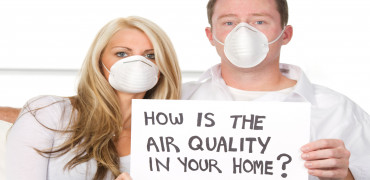We spend around 92% of our lives indoors and with concerns about the quality of the outdoor air in our towns and cities, you may think this a good thing.
But with work being the place where we spend the vast majority of our indoor time, it’s worth noting that in many office buildings, the levels of pollutants can be 2 to 5 times higher indoors than they are outdoors.
The source may also surprise you as many of these pollutants come from the equipment and cleaning products we use, and even from the clothes we wear.
This is compounded by new building regulations which have led to a greater air tightness of these buildings, so it is no longer simply possible to open a window.
And this is where the need for better ventilation systems are becoming urgent.
We need a method of removing all the lingering pollutants to bring in fresh air from the outside
A growing problem
Growing urbanisation is exaggerating the problem, with many buildings now a mixture of retail, commerce and apartments, all built or refurbished to be much more air tight than in the past.
Whilst this is great for retaining energy and makes the buildings much more efficient, it also makes it harder to change the air without mechanical intervention.
Harmful chemicals called Volatile Organic Compounds (VOCs) are already in building materials, paints, furniture and also in cleaning products.
They are even brought in on the dry cleaned clothes we wear to work and are also produced by printers, photocopies and computers and all of these chemical pollutants linger in poorly ventilated spaces.
The physical effects
This poor air quality can be really detrimental to the performance of the building’s occupants while doing little to improve their overall wellbeing.
The physical effects can cause reduced performance, drowsiness and lack of motivation and can also be linked to long term health issues
So what is needed is a method of removing the stale air and all of the lingering pollutants to bring in fresh air from the outside.
But in these days of energy consciousness, we also need to find ways of retaining the energy we have used to heat or cool the indoor air, before we throw it out.
This is where a system called Mechanical Ventilation with Heat Recovery, or MVHR can really help.



